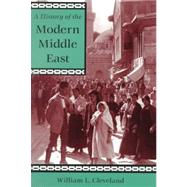
Note: Supplemental materials are not guaranteed with Rental or Used book purchases.
Purchase Benefits
What is included with this book?
|
xi | (2) | |||
| Preface | xiii | (6) | |||
| A Note About Place Names and Transliteration | xix | ||||
| Part 1 The Development of Islamic Civilization to the Eighteenth Century | 1 | (56) | |||
|
4 | (16) | |||
|
5 | (3) | |||
|
8 | (4) | |||
|
12 | (3) | |||
|
15 | (1) | |||
|
16 | (2) | |||
|
18 | (2) | |||
|
20 | (19) | |||
|
20 | (2) | |||
|
22 | (4) | |||
|
26 | (7) | |||
|
33 | (3) | |||
|
36 | (2) | |||
|
38 | (1) | |||
|
39 | (18) | |||
|
39 | (4) | |||
|
43 | (7) | |||
|
50 | (2) | |||
|
52 | (3) | |||
|
55 | (2) | |||
| Part 2 The Beginnings of the Era of Transformation | 57 | (104) | |||
|
61 | (18) | |||
|
61 | (2) | |||
|
63 | (10) | |||
|
73 | (3) | |||
|
76 | (2) | |||
|
78 | (1) | |||
|
79 | (20) | |||
|
79 | (8) | |||
|
87 | (2) | |||
|
89 | (8) | |||
|
97 | (2) | |||
|
99 | (14) | |||
|
99 | (12) | |||
|
105 | (6) | |||
|
111 | (2) | |||
|
113 | (12) | |||
|
113 | (3) | |||
|
116 | (2) | |||
|
118 | (3) | |||
|
121 | (3) | |||
|
124 | (1) | |||
|
125 | (15) | |||
|
126 | (9) | |||
|
135 | (3) | |||
|
138 | (2) | |||
|
140 | (21) | |||
|
141 | (13) | |||
|
154 | (3) | |||
|
157 | (4) | |||
| Part 3 The Struggle for Independence: The Interwar Era to the End of World War II | 161 | (96) | |||
|
164 | (17) | |||
|
164 | (9) | |||
|
173 | (5) | |||
|
178 | (1) | |||
|
179 | (2) | |||
|
181 | (21) | |||
|
181 | (7) | |||
|
188 | (1) | |||
|
189 | (2) | |||
|
191 | (6) | |||
|
197 | (2) | |||
|
199 | (2) | |||
|
201 | (1) | |||
|
202 | (20) | |||
|
203 | (6) | |||
|
209 | (3) | |||
|
212 | (3) | |||
|
215 | (3) | |||
|
218 | (3) | |||
|
221 | (1) | |||
|
222 | (35) | |||
|
223 | (2) | |||
|
225 | (2) | |||
|
227 | (3) | |||
|
230 | (2) | |||
|
232 | (4) | |||
|
236 | (2) | |||
|
238 | (4) | |||
|
242 | (6) | |||
|
248 | (3) | |||
|
251 | (4) | |||
|
255 | (2) | |||
| Part 4 The Independent Middle East Since 1945 | 257 | (196) | |||
|
259 | (25) | |||
|
259 | (2) | |||
|
261 | (8) | |||
|
269 | (2) | |||
|
271 | (11) | |||
|
282 | (2) | |||
|
284 | (20) | |||
|
284 | (2) | |||
|
286 | (5) | |||
|
291 | (6) | |||
|
297 | (5) | |||
|
302 | (2) | |||
|
304 | (20) | |||
|
304 | (3) | |||
|
307 | (4) | |||
|
311 | (2) | |||
|
313 | (4) | |||
|
317 | (6) | |||
|
323 | (1) | |||
|
324 | (29) | |||
|
325 | (10) | |||
|
335 | (9) | |||
|
344 | (3) | |||
|
347 | (4) | |||
|
351 | (2) | |||
|
353 | (24) | |||
|
354 | (9) | |||
|
363 | (11) | |||
|
374 | (3) | |||
|
377 | (21) | |||
|
378 | (10) | |||
|
388 | (8) | |||
|
396 | (2) | |||
|
398 | (24) | |||
|
398 | (15) | |||
|
413 | (7) | |||
|
420 | (2) | |||
|
422 | (31) | |||
|
422 | (2) | |||
|
424 | (4) | |||
|
428 | (8) | |||
|
436 | (4) | |||
|
440 | (3) | |||
|
443 | (2) | |||
|
445 | (5) | |||
|
450 | (3) | |||
| Notes | 453 | (5) | |||
| Glossary | 458 | (4) | |||
| Select Bibliography | 462 | (16) | |||
| About the Book and Author | 478 | (1) | |||
| Index | 479 |
The New copy of this book will include any supplemental materials advertised. Please check the title of the book to determine if it should include any access cards, study guides, lab manuals, CDs, etc.
The Used, Rental and eBook copies of this book are not guaranteed to include any supplemental materials. Typically, only the book itself is included. This is true even if the title states it includes any access cards, study guides, lab manuals, CDs, etc.